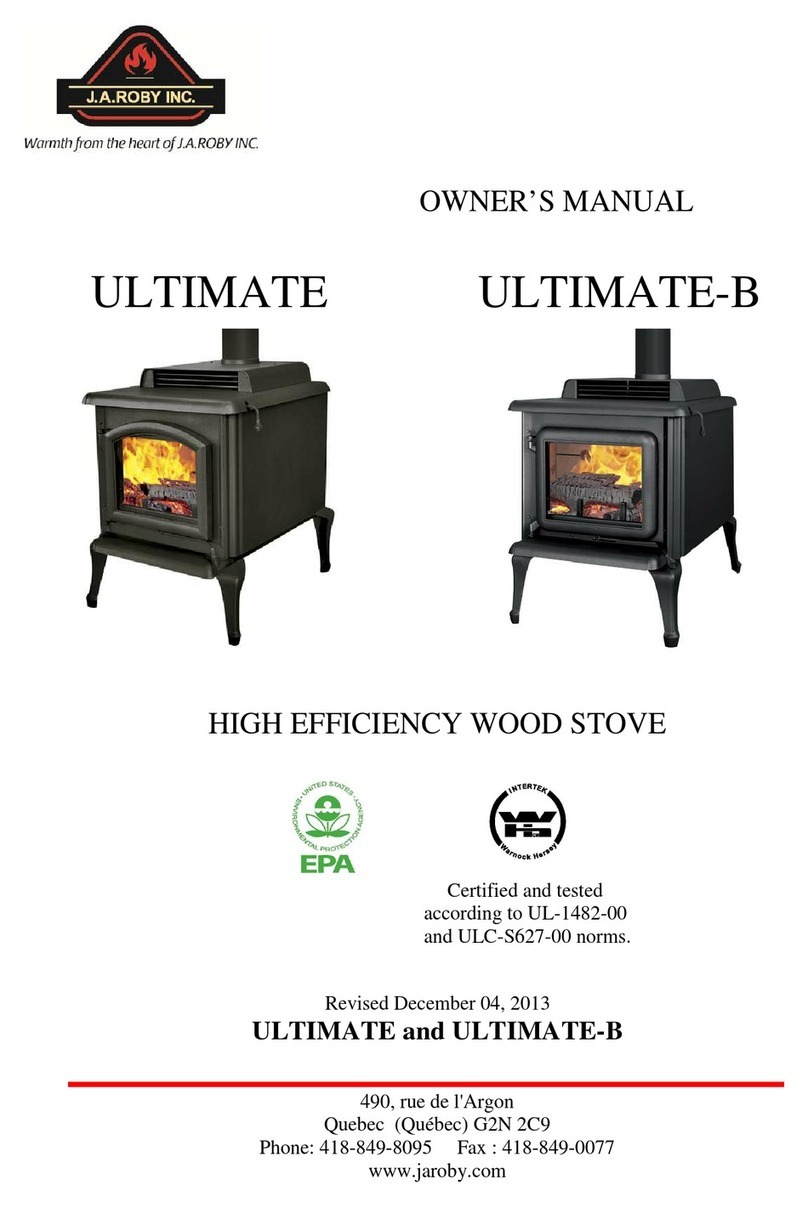
5
WARNING
Before installing, please take a few minutes to read this handbook. Keep it in a sure place
and easily reachable for future references. Not following these instructions could be a
cause of property damages, injuries or death. If this appliance is not properly installed, it
could cause fire damages to the property, injuries and death. To reduce fire hazards,
follow instructions contained in this handbook.
Contact an official inspector (ex: a fireman) or your insurance company for installation
permit. Always respect the provincial and municipal building codes of your region.
Do not connect this appliance to a chimney that already serves for another wood
appliance.
Do not install the appliance in a mobile house.
The existing chimney should be well inspected before any installation. In doubt, consult a
specialist.
The room where the appliance must be installed must measure a minimum of 64 ft
2
and
must be very well ventilated.
Minimum clearances found in this manual must be observed.
Never use a non-isolated exterior conduct or a single wall flue pipe as an exterior exit.
Put in place the firebricks before lighting the appliance (if they are not in place yet).
WARNING : Very hot while in function
Keep children far away from the appliance.
Never let the appliance without supervision when the door is open.
Always close the doors after the lighting period.
Do not use chemical products or other liquid to light the fire.
Do not burn waste or inflammable fluids like gas, naphtha or motor oil.
Always keep combustible material (clothes, furnitures, wood, matches, plastics,
etc...) at a minimal distance of 91,5 cm (3 feet) from the appliance.
This appliance is certified to burn wood. Do not use any other combustible.
Wood should not be stocked within the recommended minimums clearances or in the
necessary space for the loading and the ashes evacuation.
Always use dried wood. Do not burn green or wet wood. Do not use construction debris
such as pieces of 2x4, plywood...




























